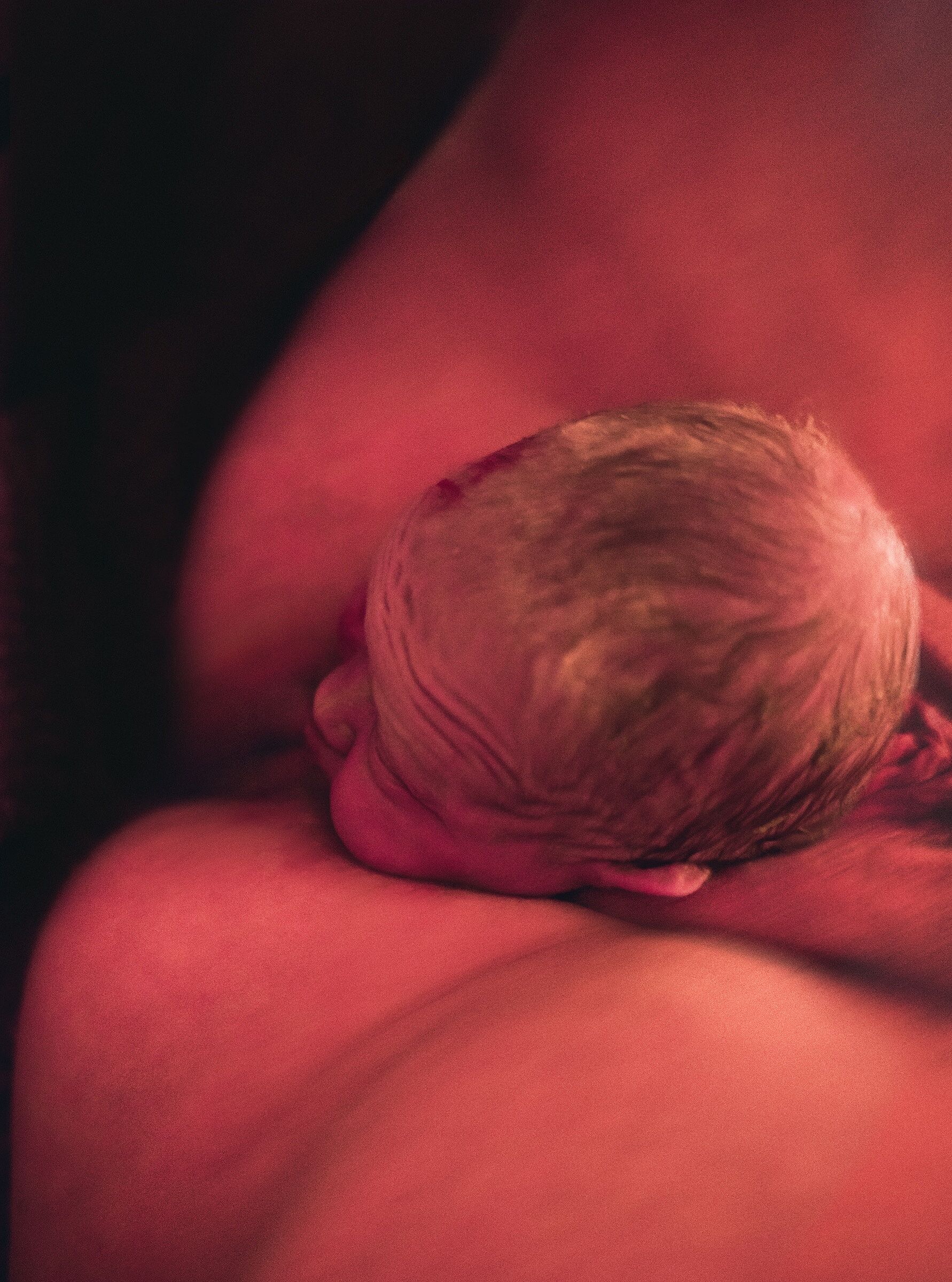Whitney Biennial 2019 | Art & Artists
May 17–Oct 27, 2019
Whitney Biennial 2019 | Art & Artists
Heji Shin
70
Floor 5
Born 1983 in Seoul, South Korea
Lives in New York, NY
Heji Shin’s Baby photographs depict the act of birth, focusing, portrait-like, on infants’ heads just after crowning. Working with midwives to find women who were willing to collaborate with her, Shin has produced images that upset both the art-historical trope of the mother and child and the quaintness of commercial baby photography. These babies’ faces are purple, wrinkled, and disembodied—but nonetheless unmistakably human, even if they themselves are not yet aware of their own humanity, or of the photographer documenting their first moments. Shin, whose work also includes fashion and other commercial photography, pulls the viewer into close communion with her subjects, often frankly depicting such charged bodily subjects as childbirth and sex.
Shin’s other body of work presented in the Biennial depicts Kanye West. For Shin, West, who is both adored and reviled, embodies the polarization of American culture. As such, her images speak less to West himself than to his celebrity role, serving as a public screen for the emotions, aspirations, and opinions of countless individuals.
Baby VI, 2016
-
0:00
Heji Shin
0:00
Heji Shin: My name is Heji Shin.
Narrator: Shin’s photos capture newborn babies at the moment they are born.
Heji Shin: Of course, everybody can agree that babies are something that you love and that you adore and admire. When you look at certain social platforms like Pinterest, you see something with butterflies, mostly decorated with flowers and all that.
The first birth that I attended, I saw what was happening and I was like, oh, this moment was actually interesting. This was, of course, the complete pinnacle of the whole process, the head coming out. It was like an instant revelation because I'm really into portrait photography. These babies were actually, at that moment, not even babies. They look very alienating. They look very gruesome at some point. It was also like, intentional that they looked this way because the procedure of birth is something very similar to death. It is very excluded from public life, from social life, even in general, just out of the minds of people. It has, of course, a reason because it's violent, it includes a lot of aggression but there are, of course, the most essential parts of life.
Narrator: Collaboration and consent are very important parts of Shin’s work.
Heji Shin: I found midwives who were really committed to this project because they really believed in it, because they also really believe in what they're doing. They asked these women and these women said yes, and they were very willing to meet. Then I was talking to them and I think there was not one mother, who actually, after a meeting, refused to do it.

